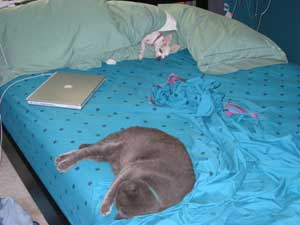I’ll bet that most of you don’t know what was so revolutionary about Technicolor, do you? That’s because you are used to modern color film stocks–just take the picture and develop it, and there’s the color.
Well, the magic of Technicolor is that it was the first process to put color into film, and it was far more complicated than you think. The first process developed by Technicolor exposed two frames of black-and-white film for each frame of the picture, one exposed through a green filter and one through a blue filter. When projected, the two black-and-white frames of film were projected back through color filters and a prism, aligned to create a colored image. After much experimentation, Technicolor eventually emerged with a three-color process using red-green-blue and three strips of film – the emulsion of those three strips was transferred onto a clear strip, creating a color print. The colors achieved from this three-strip process were gorgeous, bright, sharp and saturated. Today’s color films can’t approach the stunning images of a true Technicolor film, the same way that HDTV images made up of RGB data are so eye-popping next to regular color television.
I’ve been fascinated by stuff like this for years, and my LA acquaintance Jeff Kurtti only piqued my interest with his library of movie-making reference books and articles — many of which he wrote himself. Now, I’ve found a very comprehensive website that tells the history of Technicolor, complete with examples and images. Check it out if you’re curious about what Technicolor really was.
The site also has information about the many different widescreen movie formats through the years: Cinerama, SuperScope, Panavision, CinemaScope, VistaVision… learn how they were done: they’re more complicated than you expect!
[Update: WNYC’s “On the Media” did a story on Cinerama – listen to it in Real Audio]
